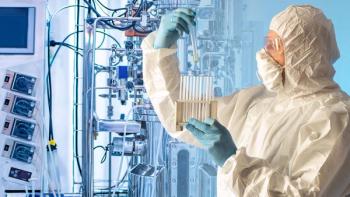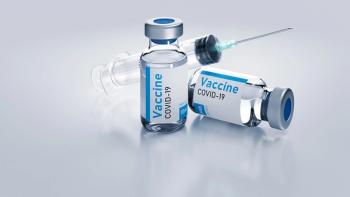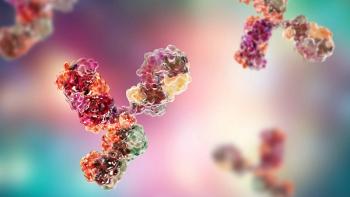
- BioPharm International September October 2025
- Volume 38
- Issue 7
- Pages: 18-20
Biosynthetic Methods in Pharmaceutical Manufacturing
Key Takeaways
- Synthetic biology advances enable engineered biosynthetic pathways, gene networks, and artificial cells, revolutionizing drug production and personalized therapies.
- Cell-free DNA and protein synthesis systems offer high yields and purity, enhancing drug development efficiency and cost-effectiveness.
Engineered biosynthetic pathways provide new avenues for accessing complex molecules.
Biosynthetic methods encompass numerous techniques for engineering living cells (top-down approach) and constructing artificial systems, such as cells and organelles (bottom-up approach) (1). Initial activities began in the late 20th century with the advent of next-generation sequencing and expansion of knowledge of genetic and molecular biology. This understanding led to the development of new synthetic biology tools and techniques, resulting in the development of genetic circuits, bioswitches, and engineered cell factories. Greater leaps were achieved with the advent of gene-editing technologies. Cell-free nucleic acid synthesis, efficient microbial synthesis of natural products and novel derivatives, and engineered cell therapies are just a few examples of how advances in synthetic biology are being leveraged by the pharmaceutical industry.
Recent advances in synthetic biology
Synthetic biology is, according to Lumeng Ye, R&D director with GenScript, biologics by human design. “It involves the engineering of biosynthetic pathways, gene networks, proteins, and molecular switches with the goal of optimizing or enhancing natural cellular functions for in vitro or in vivo medical applications,” she explains. For drug production, those pathways can exist within natural bacterial, viral, plant, and mammalian cells or be completely artificial systems. In both cases, they are engineered to produce high yields of desired products with therapeutic applications.
There are several advantages to using a synthetic biology approach, Ye observes. “With respect to drug manufacturing, synthetic biology enables the production of novel bio-based drugs and treatment modalities for common, rare, or emerging forms of disease,” she says. Use of synthetic biology tools can, Ye adds, also increase the efficiency of drug discovery, reducing time and cost and ultimately increasing access to effective and affordable treatments, including personalized therapies.
New engineered systems produced using synthetic biology range from the simple—enzymes, proteins, and regulatory elements—to the very complex comprising multiple modular units composed of different genetic circuits and enzymes (2). The modular approach affords significant flexibility and allows for the development of many types of systems that have been employed in drug discovery, drug production, and diagnostic applications.
Advances in genomic/metabolic engineering tools and techniques used in synthetic biology have enabled the field to move beyond engineering cells to contracting highly complex artificial cells and even simply synthetic organisms (3). By combining biology, engineering, and computational sciences, researchers have developed computational modeling systems to simulate the transcription and translation kinetics in gene circuits, designed droplet-based microfluidic techniques for fabricating vesicles and artificial cells, introduced the concept of mechanosensitive synthetic cells that can mimic natural cell behaviors and have potential application for targeted drug delivery, created protein-based sensors that operate by novel mechanisms, developed artificial biosynthetic pathways for production of novel antibiotics, and engineered novel receptors for gene transcription that have enabled the development of novel adoptive cell therapies.
Some specific examples of note include engineered mammalian cell-based chimeric antigen receptor (CAR) immunotherapies, treatments based on engineered induced pluripotent stem cells (iPSCs) and mesenchymal stem cells (MSCs), live biotherapeutic products based on engineered microorganisms (bacteria, yeast, fungi), self-assembling synthetic organelles that mimic the characteristics of living cells, engineered proteins, and bacterial outer membrane vesicle- and exosome-based drug-delivery systems (1).
Focus on in vitro (cell-free) systems
One important area of synthetic biology that could have a significant impact on the advanced therapy space is the development of cell-free methods for production of single-stranded (ss) and double-stranded (ds) DNA. (Note that messenger RNA [mRNA] is also produced in a cell-free manner via an in vitro transcription process).
Plasmid DNA (pDNA) produced via bacterial fermentation is the most widely used form of dsDNA. In addition to capacity limitations, there are other disadvantages to using pDNA for biopharmaceutical manufacturing applications. Plasmids contain bacterial sequences and antibiotic resistance genes, endotoxin impurities can be a concern, and the process can be highly variable and generates large quantities of waste (4).
Enzymatic, or cell-free, DNA synthesis provides dsDNA that is free of bacterial and antibiotic resistance genes in high yields and involves a simpler purification process. Several enzymatic approaches have been employed by companies including GenScript, Touchlight, 4basebio, OriCiro Genomics, Elegen Bio, LineaRx, and others.
Several companies such as GenScript, Touchlight, and DNA Script have developed cell-free synthesis methods for production of ssDNA. “Our approach at GenScript is to use enzymes that are naturally present in bacteriophages and use them sequentially in a well-designed route that provides highly pure ssDNA with high fidelity,” comments Ye.
Beyond DNA, there is growing interest in the use of cell-free synthetic approaches to protein manufacturing (5). Cell lysates prepared in bulk as aliquots can be thawed and used immediately, eliminating the need for strain propagation. Processing is often simpler because unnecessary cellular components are not included, reducing production of undesired proteins, there is no cellular material to remove, and use of consistent, high-quality reagents (DNA or mRNA templates, amino acids, nucleotides, energy sources, cofactors, etc.) results in robust processes. It is also easier to incorporate non-natural amino acids in cell-free synthesis systems, enabling production of novel therapeutic proteins.
Examples of antibody derivatives, antibody–drug conjugates, cytokines, vaccines, membrane proteins, metalloproteins, viral proteins, and antimicrobial peptides have been produced in cell-free systems, with some achieving better yields than those obtained via traditional cell culture (2). The ability to achieve desired post-translational modification has also been improved. The ability to rapidly implement cell-free protein synthesis reactions is also driving its use in the rapid evaluation of novel biosynthetic pathways and genetic circuits. In 2024, more than 25 cell-free systems for protein synthesis were commercially available, and some investigational therapeutic proteins produced using Escherichia coli (E. coli) lysates were being evaluated in clinical trials.
Accessing natural products and semisynthetic derivatives
Another important application of biosynthetic methods is the more efficient, reliable production of natural products. Access to new antibiotics effective against modern pathogens is of particular importance given the current threat posed by antibiotic resistance. Many of the antibiotics approved by FDA are secondary metabolites of actinomycetes bacteria (6), and while traditional methods for chemical synthesis of antibiotics are still relevant, synthetic biology approaches offer several advantages.
In particular, combinatorial biosynthesis, which involves the combination of natural and/or engineered enzymes from disparate sources into modified biosynthetic pathways, offers the potential to efficiently produce a wide array of natural product derivatives with significant structural diversity and greater bioactivity (6). It can also provide a means for accessing natural products not practically manufacturable using traditional synthetic methods. “With this approach, it is possible to enable microorganisms to perform new functions they would normally not be capable of,” states Kristy Hawkins, cofounder and chief scientific officer of Antheia.
Most often the enzymes are isolated from bacterial, yeast, or fungal sources known to produce pharmacologically active compounds. Enzymes from different microbes can be combined with one another, as well as with engineered enzymes, and expressed within a single organism. Examples of noteworthy enzymes used in combinatorial biosynthesis include megasynth(et)ase enzymes, which are large, multifunctional enzymes used to produce the structural frameworks of natural products and tailoring enzymes (oxidases, reductases, oxidoreductases, transferases, and cyclases, etc.) that modify those frameworks (7).
Combinatorial biosynthesis in fungal system has, for example, been used to produce steroid synthons, novel statins, various anticancer compounds, and drug-like polyketides, anthraquinones, flavonoids, naphthalenes, non-ribosomal peptides, and terpenoids (7,8). Specific pharmaceutically relevant compounds produced in such engineered cell factories include artemisinin, certain cannabinoids, celastrol, and tropane alkaloids (8).
In some cases, synthetic biology is combined with synthetic chemistry to achieve the desired product. Hawkins points to semi-synthetic antibiotics for which the scaffolds are made through fermentation (typically using the native host organism) and then modified using synthetic chemistry to improve bioavailability or other properties as great examples. Artemisinin is another example where Amyris/Sanofi developed a fermentation process to make artemisinic acid that was then converted to artemisinin.
Antheia is focused on replacing supply chains for natural products obtained via extraction from harvested crops with biomanufactured products using highly engineered organisms. “Sourcing APIs extracted from plants can be challenging, as production can be affected by weather, farming disasters, pests, geopolitical factors, and transport issues.” Plant quality and compound content can vary as well, making it difficult to develop cost-effective, robust extraction and purification processes. The overall production timeline is also typically approximately two years.
Using biosynthetic methods, Antheia is able to complete microbial fermentation and downstream purification in just two weeks for most products using a robust process that provides consistent, high-quality product, avoiding the many concerns associated with natural product supply chains, according to Hawkins.
“We develop high-producing platform strains and processes that are scalable and achieve high titers of the desired products,” Hawkins continues. “Minor adjustments are then made to produce a range of products with slightly different structures without impacting process performance. Significant reengineering is only required when we want to produce new core structures.”
Currently the company is focused on producing compounds traditionally isolated from poppy plants that are used as raw materials to make treatments for opioid addiction and for which there is no domestic supply chain in the United States. Antheia is also developing processes for the manufacture of medications to treat heart disease and nausea. Hawkins is also interested in the oncology space, for instance, producing payloads for antibody-drug conjugates that are derivatives of natural products.
Most of the compounds in Antheia’s pipeline are alkaloids produced via yeast fermentation, but its genetic engineering technologies can also be applied to the engineering of complex pathways (involving up to 30 different heterologous enzymes) in other host systems. Some of its products are precursors or key starting materials from which four to five different APIs can be readily produced using chemical transformations, and others are APIs that can be made directly from fermentation.
Much excitement for the future
The successes achieved to date using synthetic biology tools and approaches—from cell-free synthesis and combinatorial biosynthesis to adoptive cell therapies, nucleic acid vaccines, and viral-based gene therapies—is only generating more interest in the application of biosynthetic methods in biopharmaceutical applications. The creation of artificial living cell systems and complex gene circuits for use in biomanufacturing, targeted drug delivery, and analysis, including medical diagnostics, may occur in the not-to-distant future (2).
As genome-sequencing and gene-editing technologies continues to advance, rapid and cost-effective solutions for cell-free DNA synthesis improve, new cell factories are developed, additional synthetic biology tools are introduced, and artificial intelligence and machine learning are applied to the investigation and design of novel biosynthetic pathways, both understanding of biological mechanisms and opportunities for application of biosynthetic methods in biopharmaceutical manufacturing will increase dramatically.
“The ability to efficiently and reliably produce many new types of structures, including compounds with ever-higher levels of complexity, will dramatically broaden the drug discovery space and drive significant innovation, benefitting the industry, society as a whole, and most importantly, patients,” Hawkins concludes.
References
- Yan, X.; et al. Applications of Synthetic Biology in Medical and Pharmaceutical Fields. Signal Transduction and Targeted Therapy. 2023 82023 (199) DOI:
10.1038/s41392-023-01440-5 - Feng, Y.; et al. When Synthetic Biology Meets Medicine. Open Access. Life Medicine, 2024 3 (1), lnae010.
https://doi.org/10.1093/lifemedi/lnae010 . - Wang, S. Advances in Synthetic Biology. SLAS Technology, 2024 29 (5), 100197.
https://www.slas-technology.org/article/S2472-6303(24)00079-7/fulltext - Challener, C. Synthetic DNA as an Alternative to Plasmids. BioPharm International, 2024 37 (10), 14-17, 29.
- Challener, C. Cell-Free Protein Synthesis Holds Real Potential to Transform Drug Development and Manufacturing. Pharma’s Almanac, Feb 14, 2024.
https://www.pharmasalmanac.com/articles/cell-free-protein-synthesis-holds-real-potential-to-transform-drug-development-and-manufacturing . - Park, J. W.; et al. Enabling Techniques in the Search for New Antibiotics: Combinatorial Biosynthesis of Sugar-containing Antibiotics. Biochemical Pharmacology, 2017 134, 56-73.
DOI: 10.1016/j.bcp.2016.10.009 - Skellam, E.; et al. Combinatorial Biosynthesis for the Engineering of Novel Fungal Natural Products. Communications Chemistry, 2024 7 (89).
DOI: 10.1038/s42004-024-01172-9 - Zhao, Y.; et al. Structure-Agnostic Bioactivity-Driven Combinatorial Biosynthesis Reveals New Antidiabetic and Anticancer Triterpenoids. Angewandte Chemie International Edition, 2025 64 (4), e202416218.DOI:
10.1002/anie.202416218
Articles in this issue
3 months ago
Optimizing Testing in Cell and Gene Therapy4 months ago
New Technologies for Viral ClearanceNewsletter
Stay at the forefront of biopharmaceutical innovation—subscribe to BioPharm International for expert insights on drug development, manufacturing, compliance, and more.





